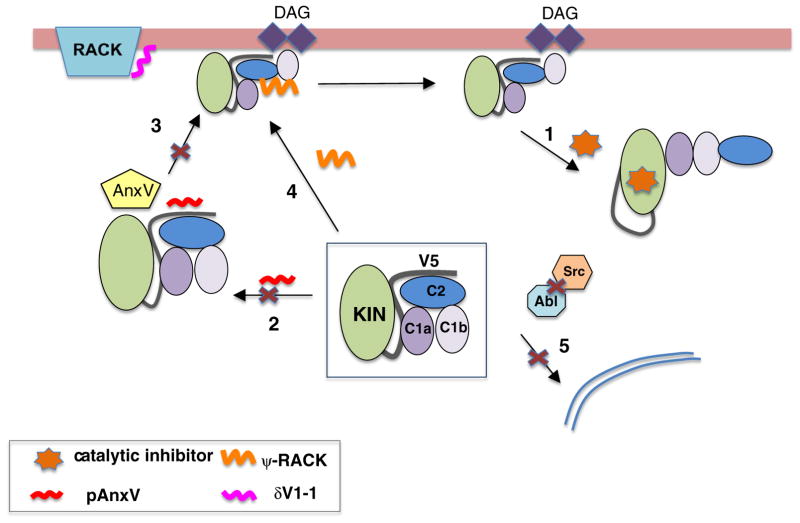Fig. 4.
Methods to target PKCδ activity. Activated PKC can be targeted with small molecule ATP-binding antagonists or substrate competitors (arrow1). Alternative strategies to overcome off-target effects have focused on disrupting intra- and intermolecular interactions. Peptides derived from inter-molecular binding partners, including Annexin V can disrupt interactions by binding to the C2 and V5 domains and prevent appropriate trafficking and activation (arrows 2 and 3). While peptides derived from PKCδ such as the δV1-1 peptide can bind to the target protein (e.g., RACKs) and prevent activation. Conversely, the pseudo-rack ψδ-RACK peptide derived from the C2-domain appears to disrupt regulatory interactions that maintain the kinase in the inactive state which leads to kinase activation (arrow 4). More recently targeting the upstream kinases (Abl and Src) required for non-canonical activation can also prevent PKCδ activation and protect against irradiation-induced cell death (arrow 5).

